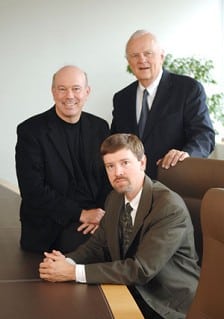Taking the biomass route to cut CO2 emissions

.floatimg-left-hort { float:left; } .floatimg-left-caption-hort { float:left; margin-bottom:10px; width:300px; margin-right:10px; clear:left;} .floatimg-left-vert { float:left; margin-top:10px; margin-right:15px; width:200px;} .floatimg-left-caption-vert { float:left; margin-right:10px; margin-bottom:10px; font-size: 12px; width:200px;} .floatimg-right-hort { float:right; margin-top:10px; margin-left:10px; margin-bottom:10px; width: 300px;} .floatimg-right-caption-hort { float:left; margin-right:10px; margin-bottom:10px; width: 300px; font-size: 12px; } .floatimg-right-vert { float:right; margin-top:10px; margin-left:10px; margin-bottom:10px; width: 200px;} .floatimg-right-caption-vert { float:left; margin-right:10px; margin-bottom:10px; width: 200px; font-size: 12px; } .floatimgright-sidebar { float:right; margin-top:10px; margin-left:10px; margin-bottom:10px; width: 200px; border-top-style: double; border-top-color: black; border-bottom-style: double; border-bottom-color: black;} .floatimgright-sidebar p { line-height: 115%; text-indent: 10px; } .floatimgright-sidebar h4 { font-variant:small-caps; } .pullquote { float:right; margin-top:10px; margin-left:10px; margin-bottom:10px; width: 150px; background: url(http://www.dmbusinessdaily.com/DAILY/editorial/extras/closequote.gif) no-repeat bottom right !important ; line-height: 150%; font-size: 125%; border-top: 1px solid; border-bottom: 1px solid;} .floatvidleft { float:left; margin-bottom:10px; width:325px; margin-right:10px; clear:left;} .floatvidright { float:right; margin-bottom:10px; width:325px; margin-right:10px; clear:left;}
Roger Ferguson and Mark Bryden spent large chunks of their careers working for the U.S. Navy as nuclear power plant engineers, one on the East Coast, the other on the West Coast. So go figure; now they’re working together in Iowa on a project to enable coal-fired power plants to burn biomass with coal.
Their start-up company, Hybrid Power Centers LLC, is exploring several strategies for coupling two or more fuel sources into one power plant. The company is currently focusing on a technology for a hybrid power plant that would burn coal and biomass in a single integrated system.
The proposed system, which would be retrofitted onto existing coal-fired plants, could enable a plant to significantly reduce its carbon dioxide emissions by burning corn stover, switchgrass or other biomass materials. At the same time, the technology promises to boost demand for the biomass market in Iowa.
The process works by burning biomass in a boiler constructed adjacent to a new or existing high-efficiency coal plant, and mixing the lower-temperature steam from the biomass boiler with the steam flow of the coal plant just prior to the combined steam flow reaching the highest-energy section of the plant.
The concept has attracted the interest of MidAmerican Energy Co., which is collaborating with Hybrid Power to further test the system and potentially retrofit one of its power plants within the next two years. Hybrid Power is also seeking matching funds from the Iowa Power Fund to advance the technology, which the company believes can be commercialized within just two to three years.
“This really isn’t the first hybrid plant attempt, but it’s really the first one focused on this sort of side generator,” said Bryden, Hybrid Power’s chief technology officer and an associate professor of mechanical engineering at Iowa State University. “People have been co-firing biomass and switchgrass in Iowa for some time. This is really an effort to fire the coal and the biomass separately. That’s probably the unique aspect of this project.”
The Power Fund board last month considered a request for $329,000 in state matching funds for the project, which is receiving the bulk of its private funding from MidAmerican. The Power Fund money would enable the project to move into a more advanced stage of technical review; the request is currently under technical review by an independent engineering firm in Kansas City, Mo.
Increased efficiency
The project is also attractive to MidAmerican because it could enable the company to increase the efficiency with which its coal plants can burn low-sulfur Powder River Basin coal. All of MidAmerican’s plants have switched to that cleaner-burning fuel in recent years, leaving them with unused generating capacity because they were built to burn coal with higher energy content.
“So you’re really getting (the extra power) for what you might say half price,” Bryden said. “You really just need to put the extra boiler in there that allows you to gather this extra energy. So if you’re a Midwest state looking at how you’re going to reduce your carbon emissions, this makes a lot of sense. You’ve got a lot of biomass around; you’ve got a lot of plants with capacity. All the pieces are there.”
A comprehensive study of the concept by Black & Veatch Corp., a global engineering and consulting firm, confirmed that the computer-modeled plant design is technologically and financially viable. Black & Veatch estimated that the technology could displace approximately 20 percent of a coal-fired plant’s CO2 emissions with carbon-neutral emissions.
The other partners in Hybrid Energy are John Shors, an attorney with Davis, Brown, Koehn, Shors & Roberts P.C. and the company’s general counsel. Shors has more than a layman’s grasp of the project, as he’s also an electrical engineer. His son Luke Shors, a consultant to the World Bank and a Harvard University doctoral student, is Hybrid Power’s chief development officer. Steven Corns, a former ISU professor who is now an assistant professor of engineering management at Missouri University of Science and Technology, is the company’s chief engineer.
Ferguson, who served as a training officer for the Navy’s nuclear submarine program in the 1960s, originally came to Iowa in 1991 with his late wife, Pamela Ferguson, when she became president of Grinnell College.
He later ran the maintenance and engineering division for a major airline and observed the increasingly sophisticated materials used in jet engines. “So I knew it was probably possible today to do things that had been discarded 30 or 40 years ago, and that the materials people at Iowa State might be a fairly significant influence on this,” Ferguson said.
Bryden worked for Westinghouse Electric Corp. at its naval reactors facility in Idaho, and later got a doctorate in combustion technology and came to ISU as a mechanical engineer. The two engineers, who had worked together earlier in their careers, reconnected through John Shors and his ties to ISU’s engineering program.
The engineers had initially focused on making the process of generating steam from nuclear power more efficient, “but then we realized there were probably a lot of other things that could be brought to market quicker than nuclear,” Ferguson said.
Emerging market
The project has the support of the Iowa Farm Bureau Federation, because it would provide another market for biomass in the state.
According to the Black & Veatch study, a farmer planting 200 acres of corn could generate revenue of $12,000 to $15,000 on an annual basis. Additionally, a farmer harvesting switchgrass from 50 acres could annually generate revenue of $10,000 to $12,000.
“We’re not asking farmers to grow something specifically for this project,” Bryden said. “We’re taking products they have available and developing a market that realizes you’ve got to deal with the moisture content, energy content. … It would seem like Iowa would benefit from leading that, from being the one setting the regulations for how we’re going to do it.”
Kevin Dodson, MidAmerican’s director of environmental programs, compliance and permitting, said that if the technology proves to be as beneficial as the Black & Veatch study indicates, “we could install it on probably half of our units.” MidAmerican operates 10 coal-fired power plants in Iowa, along with one jointly owned unit that’s operated by Alliant Energy Corp.
Dodson said there aren’t any other technologies that have the potential to bring coal-fired plants into compliance with proposed federal targets for reducing carbon emissions. Many of those plants can’t run on natural gas without a major conversion, he said, and carbon capture/sequestration, “while interesting conceptually, is nowhere near commercially available at this point.”
Hybrid Power’s technology is a potential “great tool” for MidAmerican to reach lower CO2 emissions targets, Dodson said.
“We are committed to reducing CO2 emissions, if that’s the direction that Congress wants to take the economy and the nation,” he said. “So this is kind of an exciting opportunity for us to be able to utilize a novel technology to help us meet near-term goals.”








